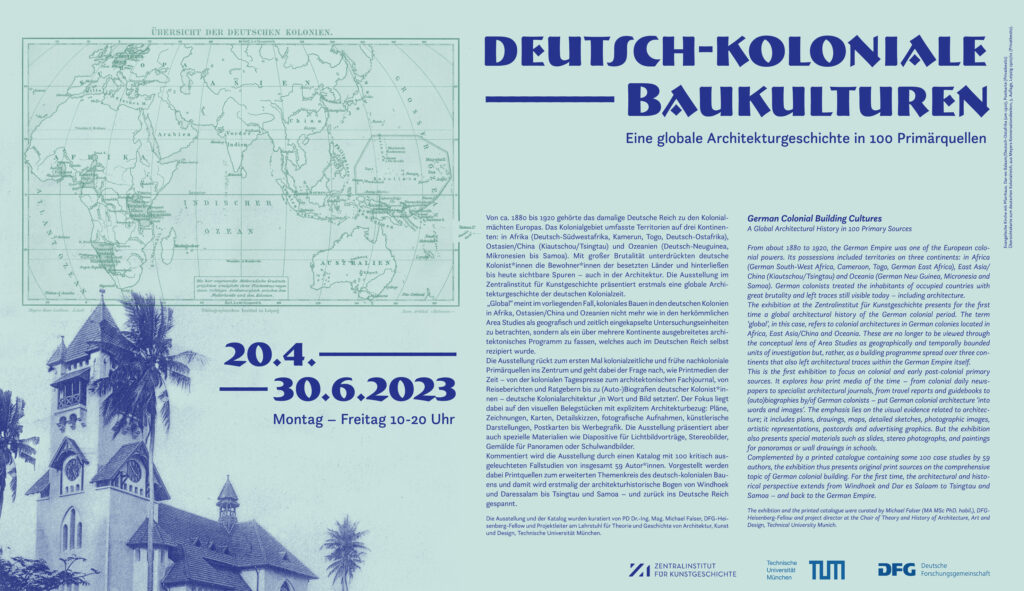
Exhibition at the Zentralinstitut für Kunstgeschichte Munich, Germany, 20 April – 30 June 2023
From about 1880 to 1920, the German Empire was one of the European colonial powers. Its possessions included territories on three continents: in Africa (German South-West Africa, Cameroon, Togo, German East Africa), East Asia/ China (Kiautschou/Tsingtau) and Oceania (German New Guinea, Micronesia and Samoa). German colonists treated the inhabitants of occupied countries with great brutality and left traces still visible today – including architecture.
The exhibition at the Zentralinstitut für Kunstgeschichte presents for the first time a global architectural history of the German colonial period. The term ‘global’, in this case, refers to colonial architectures in German colonies located in Africa, East Asia/China and Oceania. These are no longer to be viewed through the conceptual lens of Area Studies as geographically and temporally bounded units of investigation but, rather, as a building programme spread over three continents that also left architectural traces within the German Empire itself.
This is the first exhibition to focus on colonial and early post-colonial primary sources. It explores how print media of the time – from colonial daily newspapers to specialist architectural journals, from travel reports and guidebooks to (auto)biographies by/of German colonists – put German colonial architecture ‘into words and images’. The emphasis lies on the visual evidence related to architecture; it includes plans, drawings, maps, detailed sketches, photographic images, artistic representations, postcards and advertising graphics. But the exhibition also presents special materials such as slides, stereo photographs, and paintings for panoramas or wall drawings in schools.
Complemented by a printed catalogue containing some 100 case studies by 59 authors, the exhibition thus presents original print sources on the comprehensive topic of German colonial building. For the first time, the architectural and historical perspective extends from Windhoek and Dar es Salaam to Tsingtau and Samoa – and back to the German Empire. The Table of Contents with the Introduction to the publication is here.
The exhibtion and the printed catalogue were curated by Michael Falser (MA MSc PhD. habil.), DFG Heisenberg-Fellow, project director at the Chair of Theory and History of Architecture, Art and Design, Technical University Munich, and member of EAHN. Email: michael.falser@tum.de
